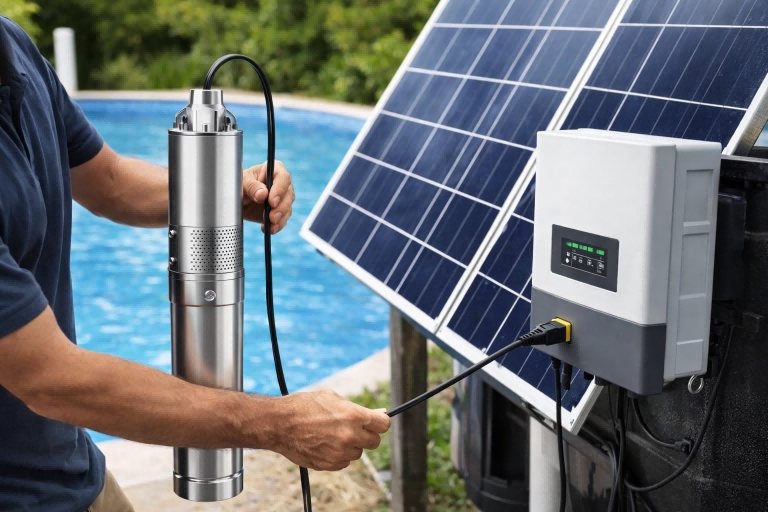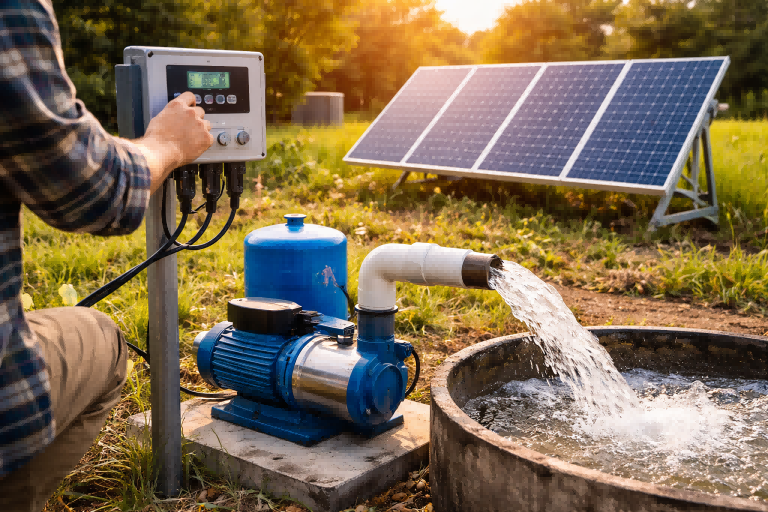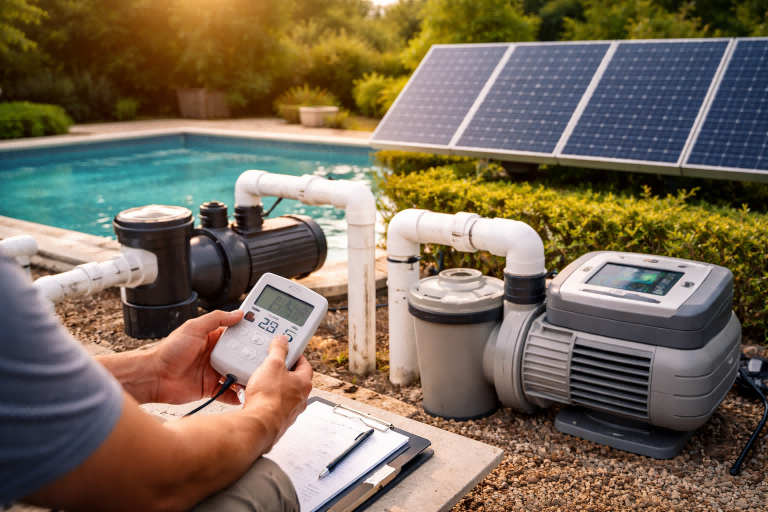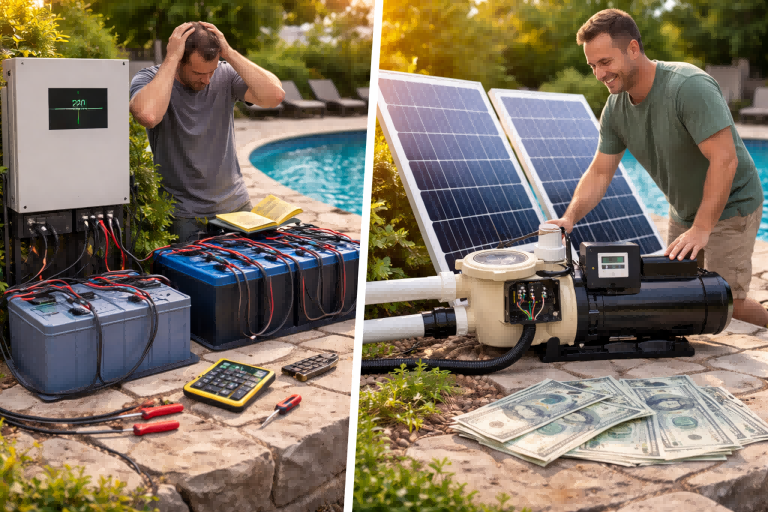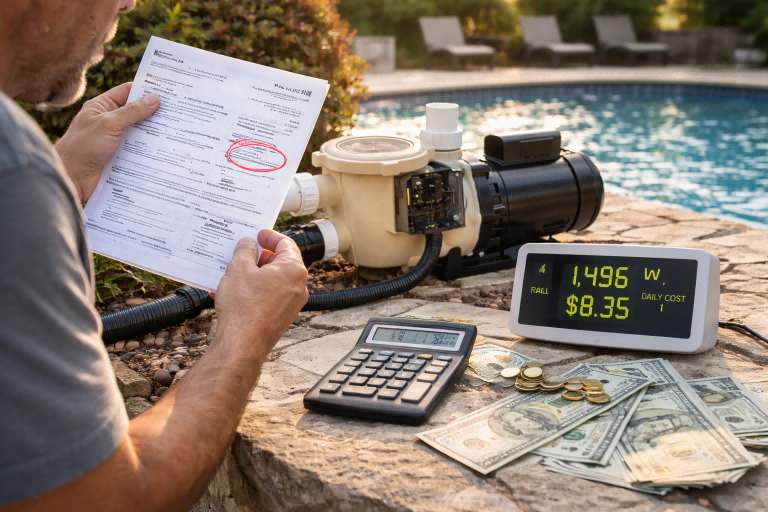Struggling with weak water flow in your properties?
This frustrating issue can make daily tasks difficult and signal a bigger problem with the water supply system.
Not every house requires a water pump. However, a pump becomes essential if the municipal water pressure is too low, if the home uses well water, or if it's a multi-story building where gravity hinders water flow to upper floors. A booster pump can solve these common issues.
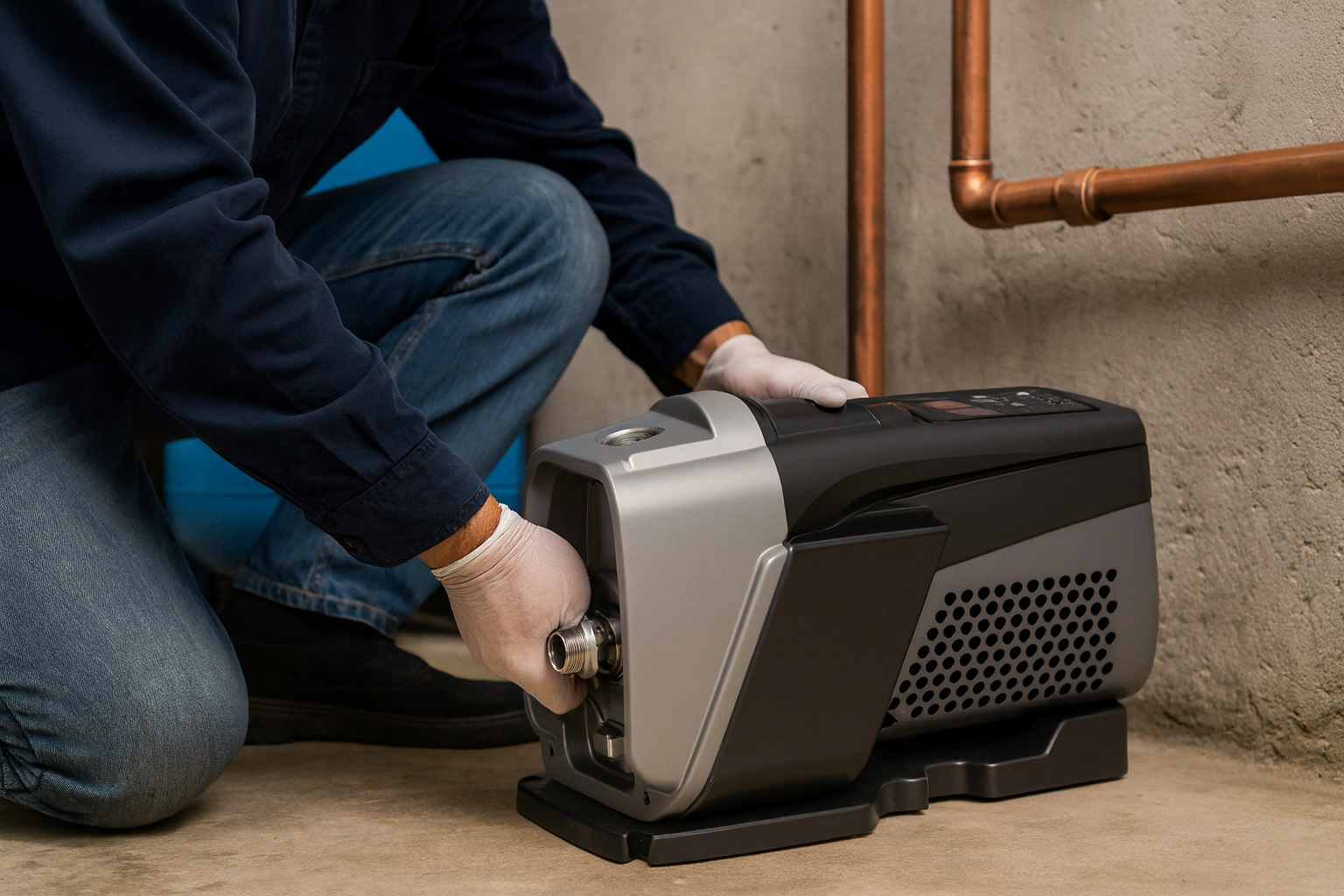
Understanding the specific situations that demand a water pump is crucial for ensuring a reliable water supply.
It helps you determine whether a property can function with the existing municipal pressure or if an upgrade is necessary.
This knowledge is key for property owners and especially for distributors advising their clients on the best solutions.
Let's explore the exact scenarios where a water pump isn't just a luxury, but a necessity.
When is a Water Pump Absolutely Necessary?
Is inconsistent water pressure causing complaints from your clients?
This common problem can disrupt everything from showers to irrigation, making a reliable solution essential for customer satisfaction.
A water pump is absolutely necessary when a home's water source pressure is below 40 PSI. This includes homes with private wells, those at the end of a municipal line, or multi-story buildings where pressure drops significantly on higher floors.
Identifying these key situations is the first step toward providing an effective solution.
For distributors, recognizing these non-negotiable needs allows you to stock the right products and offer expert advice.
It positions you as a problem-solver, not just a supplier.
A deep dive into these scenarios reveals why a simple pressure check can be the most important diagnostic tool for any property.
Key Indicators for Pump Installation
The most direct signal for needing a pump is low water pressure.
But what does "low pressure" actually feel like to a homeowner?
It's more than just a number on a gauge.
It manifests in everyday frustrations.
- Weak Showers: A shower that trickles instead of sprays is a classic sign.
- Slow-Filling Appliances: Washing machines or dishwashers taking an unusually long time to fill.
- Multiple Fixture Problem: Turning on a faucet causes the shower pressure to drop dramatically.
- Ineffective Sprinklers: Garden sprinklers that barely cover the intended area.
These issues point to a system that cannot handle demand.
Scenarios Demanding a Pump
Certain property types and locations are predisposed to needing a water pump.
Understanding these categories helps you anticipate your customers' needs.
Properties on Well Water
Homes not connected to a municipal supply rely entirely on a well.
A well pump is non-negotiable here.
It's the heart of the home's water system, responsible for drawing water from the ground and pushing it into the house.
Without it, there is no water.
Homes at High Elevations
Even on a municipal line, physics can be an issue.
Houses situated on a hill or at a higher elevation than the water main may experience low pressure.
The municipal system may not have enough force to push water uphill effectively.
A booster pump corrects this by adding the necessary force to deliver adequate pressure.
Multi-Story Buildings
Taller buildings face a similar challenge.
Water pressure naturally decreases as it travels upward against gravity.
A ground-floor apartment might have great pressure, while the top-floor unit suffers.
A constant pressure booster system is often required to ensure every floor receives consistent and adequate water flow.
This table breaks down the scenarios and the typical solution:
| Scenario | Primary Problem | Recommended Pump Solution |
|---|---|---|
| Private Well | No initial pressure source | Submersible Well Pump or Jet Pump |
| Low Municipal Pressure | Insufficient incoming force | VSD Booster Pump |
| High Elevation Property | Gravity working against flow | VSD Booster Pump |
| Multi-Story Building | Pressure loss on upper floors | Constant Pressure Booster System |
For distributors, this knowledge is power.
You can create packages for specific needs, such as a "Well Water Starter Kit" or a "Multi-Story Pressure Solution."
This approach helps your clients, the installers, and contractors see you as a valuable partner who understands their challenges.
It moves the conversation from price to solutions.
Understanding Different Types of Household Water Pumps
Are your customers confused by the variety of water pumps available?
This uncertainty can lead to incorrect purchases and poor performance, reflecting badly on both the product and the distributor.
The main types of household pumps are jet pumps and submersible pumps for wells, and booster pumps for increasing pressure from a municipal source. Each is designed for a specific application, and choosing the correct one is vital for system efficiency and longevity.
Knowing the specific function of each pump type is fundamental for any distributor.
It allows you to guide your clients toward the most effective and efficient solution for their unique situation.
This expertise builds trust and ensures the end-user is satisfied with their water system's performance.
Let's break down the mechanics and best uses for these essential pump categories.
Well Pumps: The Source of Water
For any property using a private well, the well pump is the starting point.
The choice between the two main types depends almost entirely on the depth of the well.
Jet Pumps
Jet pumps are mounted above ground and pull water up from the well.
They are best suited for shallow wells, typically those less than 25 feet (about 7.6 meters) deep.
They work by creating a vacuum to suck water up.
Because they are located on the surface, they are easier to access for maintenance and repairs.
This makes them a popular choice for homeowners who prefer easier serviceability.
Submersible Pumps
For deep wells, a submersible pump is the only viable option.
These pumps are long and cylindrical.
They are lowered directly into the well and submerged in the water.
Instead of pulling water up, they push it up to the surface.
This method is far more efficient for deep applications, as pushing water is easier than sucking it over long vertical distances.
They are generally more reliable and have a longer lifespan since the water keeps the motor cool.
Booster Pumps: Enhancing Existing Pressure
Booster pumps don't source water.
They take water that is already in the plumbing system and increase its pressure.
This is the go-to solution for homes with low municipal water pressure.
Conventional Booster Pumps
Traditional booster pumps operate at a single speed.
When pressure drops below a set point, they turn on at full power.
They turn off once the pressure reaches a high set point.
This can create noticeable pressure fluctuations and puts significant stress on the pump motor with each start and stop.
They are a basic solution but lack the sophistication of modern systems.
Comparison of Pump Types
A clear comparison helps in making an informed decision.
| Pump Type | Best Use Case | Location | Key Advantage |
|---|---|---|---|
| Jet Pump | Shallow wells (<25 ft) | Above ground | Easy maintenance access |
| Submersible Pump | Deep wells (>25 ft) | Inside the well | Highly efficient, quiet |
| Booster Pump | Low municipal pressure | After the water meter | Increases existing pressure |
For a distributor like "Andrew" in Australia, understanding these differences is critical.
He can advise his customers, who might be developers or contractors, on whether to install a jet pump for a small farm's shallow well or a submersible pump for a new suburban home with a deep well.
Stocking a range of these pumps allows him to cater to the diverse needs of his market.
The Rise of VSD Booster Pumps for Modern Homes
Are your customers still using outdated, inefficient pump systems?
These old pumps waste energy and provide inconsistent pressure, leading to high utility bills and a frustrating user experience.
Variable Speed Drive (VSD) booster pumps are the modern solution. They automatically adjust their motor speed to maintain constant water pressure, regardless of demand. This intelligent operation can cut energy consumption by up to 50% and provides a superior user experience.
Adopting advanced technology like VSD pumps is essential for staying competitive.
For importers and distributors, offering these high-efficiency pumps is a significant value proposition.
You can provide your clients with a product that saves money, improves comfort, and is built to last.
Let's examine why VSD technology is becoming the new standard for residential water pressure management.
How VSD Technology Works
The core of a VSD pump is its "brain"—the variable frequency drive.
This intelligent controller constantly monitors the water pressure in the system.
When a tap is opened, the pressure starts to drop.
The VSD senses this drop and slightly increases the pump's motor speed to compensate, keeping the pressure perfectly stable.
If more taps are opened, the VSD increases the speed further.
When all taps are closed, the pump slows down to a gentle stop.
This is fundamentally different from a traditional pump.
A traditional pump is either off or on at 100% speed.
This binary operation is inefficient and harsh on the equipment.
The Key Benefits of VSD
The advantages of VSD technology are significant, both for the end-user and for the longevity of the system.
Energy Efficiency
This is the most significant benefit.
A pump motor's energy use is exponentially related to its speed.
By running at the exact speed needed, instead of full speed all the time, a VSD pump uses drastically less electricity.
Savings of up to 50% are common.
For homeowners, this means lower monthly bills.
For distributors, it's a powerful selling point.
Constant Water Pressure
The VSD system eliminates pressure fluctuations.
Someone can be taking a shower, the dishwasher can be running, and the garden sprinkler can be on—and the shower pressure will remain constant.
This provides a level of comfort and reliability that traditional pumps cannot match.
It’s a tangible improvement in daily life.
Quiet Operation
Because the pump rarely runs at full speed, it operates much more quietly.
The "soft start" and "soft stop" functionality also eliminates the loud clunking sound associated with traditional pumps turning on and off.
This is a major quality-of-life improvement, especially if the pump is located inside or near the house.
Longer Equipment Lifespan
The soft-start mechanism dramatically reduces mechanical stress on the motor and pump components.
Fewer hard starts and stops mean less wear and tear over time.
This extends the life of the pump, reducing the total cost of ownership and increasing customer satisfaction.
VSD vs. Traditional Pumps: A Clear Winner
| Feature | Traditional Booster Pump | VSD Booster Pump |
|---|---|---|
| Pressure Control | Fluctuates between high/low setpoints | Perfectly constant |
| Energy Usage | High (always runs at 100% speed) | Low (adjusts speed to demand) |
| Noise Level | Loud during start/stop and operation | Very quiet |
| Motor Stress | High (frequent hard starts) | Low (soft start/stop) |
| Lifespan | Shorter due to mechanical stress | Longer due to reduced wear |
For a business owner like Andrew, offering VSD pumps is a strategic advantage.
He can market them as a premium, "smart" solution.
His customers—installers and developers—can then sell these benefits to homeowners, creating a value chain that benefits everyone.
It positions his brand as modern, efficient, and high-quality.
How to Choose the Right Pump for a Property
Is selecting the right pump a guessing game for your clients?
Choosing the wrong size or type of pump leads to poor performance, wasted energy, and premature failure, creating customer complaints and costly replacements.
To choose the right pump, you must first determine the required flow rate and pressure. Flow rate is based on the number of fixtures, while pressure is based on the building's height and the desired outlet pressure. These two factors are essential for correct pump sizing.
Properly sizing a pump is the most critical step in designing a reliable water system.
For a distributor, providing clear guidance on this process is a key service.
It empowers your clients to make the right choices, ensuring successful installations and happy end-users.
Let's walk through the essential calculations and considerations for perfect pump selection.
Step 1: Calculating the Required Flow Rate
Flow rate, typically measured in gallons per minute (GPM) or liters per minute (LPM), is the volume of water the pump needs to deliver.
The goal is to estimate the maximum amount of water that a household might use at one time.
A simple way to do this is to count the number of water fixtures in the house.
Fixture Count Method
Assign 1 GPM for each fixture.
This includes:
- Faucets (kitchen, bathroom)
- Showers
- Toilets
- Washing machine
- Dishwasher
- Outdoor hose bibs
A typical three-bedroom, two-bathroom house might have around 10-12 fixtures.
This would suggest a required flow rate of 10-12 GPM.
This method provides a reasonable estimate for peak demand.
Step 2: Determining the Required Pressure
Pressure is measured in pounds per square inch (PSI) or bar.
You need enough pressure to overcome gravity and friction, and still have good pressure at the tap.
This is often called the "Total Dynamic Head."
Components of Required Pressure:
- Desired Outlet Pressure: Most homeowners want 40-50 PSI at their fixtures. Let's use 50 PSI as our target.
- Pressure Loss from Elevation: You lose about 0.433 PSI for every foot of vertical height the water must be lifted. For a two-story house, you might need to lift water 20 feet from the pump to the second-floor shower.
- Calculation: 20 feet x 0.433 PSI/foot = 8.66 PSI
- Friction Loss: As water flows through pipes, friction slows it down. This can account for another 5-10 PSI of loss in a typical home. Let's use 5 PSI.
Total Required Pressure (Boost):
- Formula: Desired Pressure + Elevation Loss + Friction Loss - Inlet Pressure
- Example: Let's say the incoming city pressure is only 30 PSI.
- Calculation: 50 PSI (desired) + 8.66 PSI (elevation) + 5 PSI (friction) - 30 PSI (inlet) = 33.66 PSI.
The booster pump must be able to provide at least 34 PSI of additional pressure.
Step 3: Using a Pump Curve
Once you know the required flow rate and pressure, you can select a pump.
Every pump comes with a performance curve chart from the manufacturer.
- The vertical axis shows pressure (or head).
- The horizontal axis shows flow rate.
You find your required flow rate on the horizontal axis and your required pressure on the vertical axis.
Your ideal pump is one where this point falls in the middle of its curve, known as the Best Efficiency Point (BEP).
Choosing a pump that operates at its BEP ensures it runs efficiently and lasts a long time.
| Parameter | What it Measures | How to Calculate It |
|---|---|---|
| Flow Rate (GPM/LPM) | Volume of water needed | Count the number of fixtures (1 GPM per fixture) |
| Pressure (PSI/Bar) | Force needed to deliver water | Calculate required boost based on desired pressure, height, and friction |
For B2B customers like Andrew, providing sizing calculators or training on reading pump curves is an invaluable service.
It helps his team specify the correct RAFSUN pump for every project, from a small single-family home to a larger residential complex.
This technical support builds loyalty and reinforces his company's reputation for quality and expertise.
Conclusion
In short, a water pump is not a universal need for every house.
It is, however, an essential solution for specific, common problems related to low pressure and private wells.
FAQs
What PSI should my house water be?
Ideal house water pressure is between 45 and 55 PSI. Pressures above 80 PSI can damage plumbing, while pressures below 40 PSI result in poor performance.
Can I install a water pump myself?
While possible for those with advanced DIY skills, professional installation is recommended. This ensures proper setup, safety, and compliance with local plumbing codes.
How much does a booster pump increase water pressure?
A booster pump is sized for specific needs. It can provide a small increase of 10 PSI or a significant boost of 50 PSI or more, depending on the model.
Where is the best place to install a booster pump?
The best place is on the main water line just after the water meter and shut-off valve. This ensures the pressure is boosted for the entire house.
Do water pumps use a lot of electricity?
Traditional pumps can be energy-intensive. Modern VSD pumps, however, are highly efficient, adjusting their speed to demand and cutting electricity use by up to 50%.
How long does a house water pump last?
The lifespan of a water pump varies. A quality well pump can last 8 to 15 years, while a modern VSD booster pump may last even longer due to reduced mechanical stress.
What maintenance does a water pump require?
Pumps require minimal maintenance. It's good practice to have them professionally inspected every year or two to check the pressure tank, electrical connections, and overall performance.
Can a booster pump pull water from a well?
No, a booster pump is designed to increase pressure in an already pressurized line. To draw water from a well, you need a dedicated well pump, like a submersible or jet pump.


